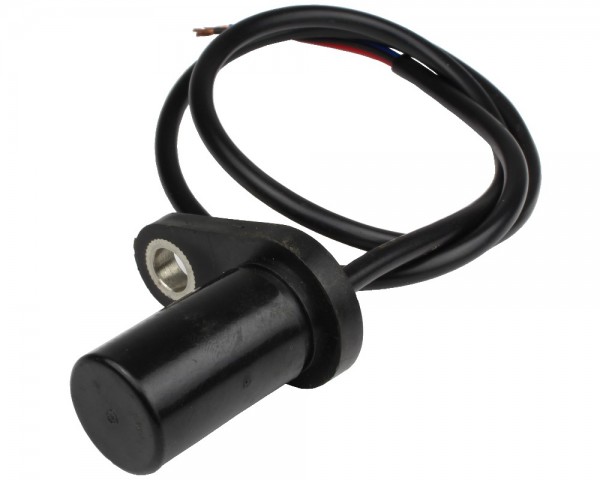Hall Effect Gear Tooth Sensors are an established and inexpensive technology for the measurement of position and rotational speed. By sensing the magnetic flux variation in the air gap between a magnet and passing ferrous gear teeth, they generate a pulse signal with a frequency proportional to rotational speed. Their quick response time, high operating temperature range as well as their contamination, and EMI immunity have turned Hall Effect Gear Tooth Sensors into popular sensing solutions for many different industries like automation, automotive, and renewable energy.
 Figure 1: Hall Effect Gear Tooth Sensor
Figure 1: Hall Effect Gear Tooth Sensor
In gearbox wind turbines, gear-tooth design deficiencies and gearbox failures occur at specific bearing locations and later advance into surface wear, bearing debris as well as misalignments of gear teeth. These result in scheduled shutdown time for maintenance work, which is costly and time-consuming. Hall Effect Gear Tooth sensors are utilized to proactively optimize the operation of gearbox wind turbines. They monitor the speed and position of the gears and consequently reduce maintenance work and operation costs.
In this article, we take a closer look at this useful technology.


